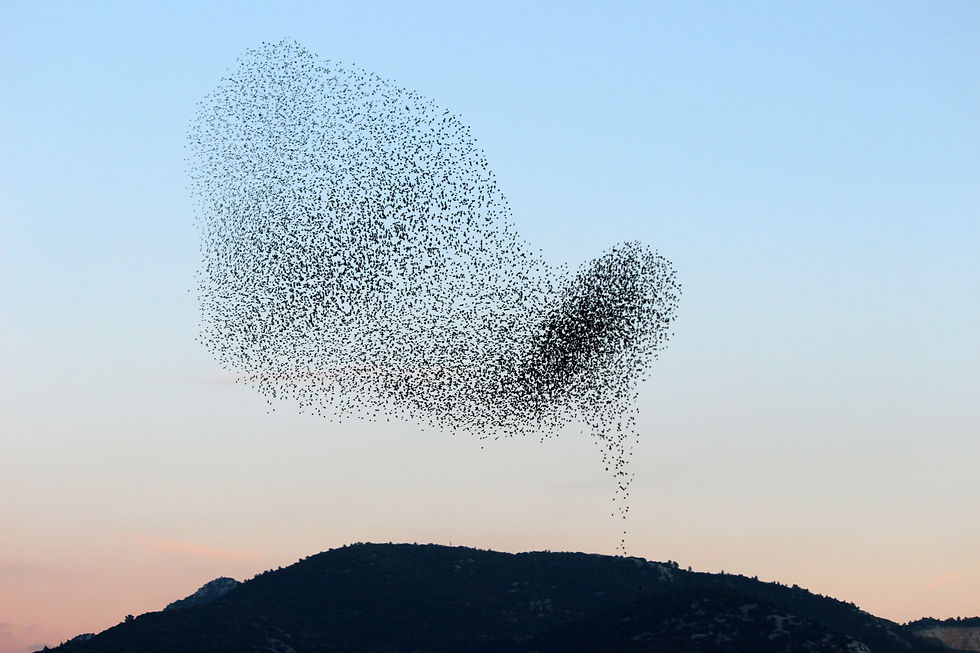Climate as a challenge for cooperative action
- Fred Malich

- Dec 19, 2024
- 3 min read
Book review : Climate Change by Stefan Rahmstorf, Hans Joachim Schellnhuber (in German language), Munich 2018, 144 pp., EUR 9.95, ISBN 3406743765

Climate change is practically on everyone's lips. Do we now, just before Christmas season need a book bearing the same name? You involuntarily want to say “Better not!” You involuntarily want to say “Don't!”.
A quick glance at the book tells you immediately, that the authors Stefan Rahmstorf and Hans Joachim Schellnhuber - both renowned scientists for Climate Impact Research - have a lot to say about the climate. This includes its history, its development in the 20th century and what climate change means for the future.
The facts in a nutshell: The years 2016, 2017 and 2015 were the warmest worldwide since temperature records began, and 2024 is about to top them. Primarily due to man-made carbon combustion and deforestation, the global concentration of carbon dioxide (CO2) has risen over the past 200 years to a level last seen on Earth 1,000,000 years ago - in other words, in the time of Homo erectus . According to everything known about the history of the Earth, such an increase in the concentration of a climate-relevant gas in such a short time has never occurred before.
Both authors emphasize that the Earth has experienced both colder and warmer climate periods throughout its history. However, one would have to go back at least 120,000 years from today to the last warm period to find even higher global (average) temperatures on Earth. And this despite the fact that we are currently in a phase of relative cooling in geological terms. At the same time, one should be aware that modern humans - Homo sapiens - only gradually managed to settle down in moderate temperate climates only 10,000 years ago by learning to farm. Settlement is therefore linked to long-term stable environmental conditions. However, this is precisely what is increasingly being called into question due to today's climate change.
In the last chapter of their very informative book, Rahmstorf and Schellnhuber talk about the real challenge for us humans, namely the way the global community has so far been dealing with the phenomenon of climate change. In doing so, one must be clear about the fundamentally new nature of the situation. There have indeed been global crises in the past, such as the Second World War or pandemics such as the Spanish flu or COVID-19. Each of these events was a major challenge for the global community, and each of these events eventually came to an end.
The special thing about current climate change, however, is that there will be no "end", at least not within a humanly measurable time. In consequence, rapid and effective adaptation to irreversible, man-made climate change is the order of the day. The strong reduction in the production of greenhouse gases such as CO2 and methane must be the focus of all considerations. The challenge is to reduce quickly and permanently the energy consumption in the major industrialized countries under fair conditions for all earth's inhabitants - humans, animals and plants. Mutual cause-effect relationships makes this task not easier. Rahmstorf and Schellnhuber rightly call this a baptism of fire for the emerging global society.
The fundamental social question is how to achieve diverse and fair transnational balancing of interests between different social groups that are organized externally as states taking additionally into account the legitimate interests of tomorrow's generations. And how this can be achieved when states are already today facing the great challenge of formulating and executing their own essential interests transparently, fairly and in lasting manner. Interest-led cooperation that is based on fair, cross-generational balancing of interests and proactive explanations - over and over again - is likely to be the major long-term task of any serious policy, and not just in the 21st century.
Rahmstorf and Schellnhuber do not dare to enter this area for good reason. It would simply go beyond the scope of their pocket-sized climate education work. But that is precisely why their book would be well worth a follow-up print - how about "Climate change as a change in behavior" as working title? Let's wait and see. In any case, the authors manage to convey important climate connections to their readers so concisely that the book is worth reading and not only in Christmas season.



